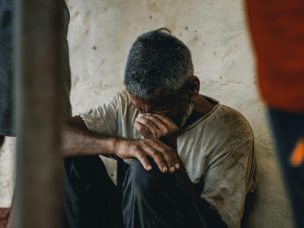Alopecia produces distinct physical symptoms, but also has a complex psychosocial effect on patients, which this study describes in detail.
Alopecia areata (AA) is an autoimmune disease that affects about 2% of the population and can cause inflammation in any hair-bearing area, although most commonly in the scalp. Beyond the physical effects of the disease, AA can have significant effects on quality of life and mental health.
Many clinical trials use the Severity of Alopecia Tool (SALT) to evaluate the extent of hair loss across the scalp, with a SALT score of greater than 50% considered severe. For patients with severe symptoms, hair regrowth is limited in its efficacy, and newer medical therapies are inaccessible to many patients. Psychological support is one of the ways that patients receive relief from the mental distress that AA can cause. This study, published in the European Academy of Dermatology and Venereology, provides a review of data on the impact of AA on quality of life and mental health.
Psychosocial Burden of Alopecia Highest in Patients with Moderate Disease
This study used a literature review to gather data about quality of life and AA, including details related to mental health, self-harm, and work-related complications such as unemployment. Each area affected by AA was evaluated independently, with differing results. Greater impacts on quality of life were found in younger patients and women. Hair loss affecting eyebrows and eyelashes also correlated with worsening quality of life. The highest quality of life burden was found among patients with hair loss in the 21%–49% range, hypothesized to be the result of patients with more severe alopecia receiving better psychological support.
Psychiatric comorbidities were common in patients with AA, and included anxiety, depression, suicidal ideation, and psychiatric hospitalizations. Mental health symptoms were present in 30%–68% of patients with AA, with anxiety and depression being the most common. AA was also found to affect patients’ work lives, with absenteeism and unemployment being significantly higher compared with controls.
Dealing With Psychological Symptoms of AA Just as Important as Physical Symptoms
Two-thirds of patients reported making some kind of major life decision, such as changing their education or career, on the basis of their AA. About half of all AA patients regularly missed work or school due to AA, whether due to mental health conditions or medical appointments. These are some of the metrics that show the impact that alopecia can have on the day-to-day lives of patients who deal with it, leading to the conclusion that AA is much more than just an aesthetic skin disease. Effective treatment for AA, as a result, needs to address the psychosocial consequences of the disease.
Source:
Muntyanu, A., Gabrielli, S., Donovan, J., Gooderham, M., Guenther, L., Hanna, S., Lynde, C., Prajapati, V. H., Wiseman, M., & Netchiporouk, E. (2023). The burden of alopecia areata: A scoping review focusing on quality of life, mental health and work productivity. J Eur Acad Dermatol Venereol. https://doi.org/10.1111/jdv.18926







